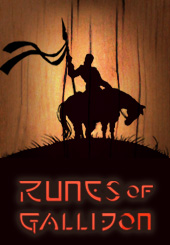Golems are humanoid constructs made only by the Spellweavers of the Greater Noble House Kotar. They are created from stone or clay, although there are rumors that, if one works with a Necromancer, a "flesh golem" could be created. The concept is mythical only and the idea of practicing such an art is considered reprehensible.
TYPES OF GOLEMS
Stone: The easiest humanoid construct to create. After an artisan chisels a basic form from the rock (usually granite), they insert a simple scroll and speak the charms, giving semi-sentience to these large, simple beasts. Stone golems are used primarily for basic slave labor; breaking, hauling, building, and guarding.
Marble: The second-easiest humanoid construct to create. The marble statue is usually carved with more care than the stone, and the scroll is more detailed. These golems are mostly used for decoration, and occasionally to fill brothels or the part of a mistress or lover.
Clay: One of the most difficult types to make, a clay golem is usually a rare luxury item used as an indentured servant to a noble family. Instead of being carved from stone, the clay statue is formed by an artistan's careful hand over a long period of time, and often is adorned with jeweled eyes and human hair. They are best suited for human interaction, and their scrolls are most intricate and take a good deal of time to create. One of the most expensive golem types.
Metal: The rarest golem type. No current metal golems are known to be in existence. These great machines run more on cogs, weights, and the power of steam than magic, and can be used in times of war. They are expensive, powerful, and very, very dangerous.
GOLEM SCROLLS
A golem's scroll is an arcane, runed parchment created by a skilled magician. They can be quite basic, but the more detail in the work, the more humanlike the resulting golem will be.
All scrolls must have the following rules on them before the magician can place it in the head of their creation:
1. A golem may not injure a Kotar noble or, through inaction, allow a Kotar noble to come to harm.
2. A golem must obey any orders given to it by Kotar nobles, except where such orders would conflict with the First Law.
3. A golem must protect its own existence as long as such protection does not conflict with the First or Second Law.
(Credit where credit is due: These laws are also Isaac Asimov's Three Laws of Robotics)
A NOTE ON FREE WILL
Golems are more likely to grow unstable than free-willed, especially due to shoddy craftsmanship. The more finely-crafted golems, such as Cephas, slowly learn the concepts of like and dislike, want and desire, and so forth -- however, when treated well, they also learn the concept of loyalty and family, which keeps them happily (or at least contentedly) in their slave-like state.
Golems are imbued with a level of self-awareness and thought at creation, as much needed for their work. If a golem is needed to swing a hammer and crack rocks, it will have less mental capacity than a golem who is asked to scribe, or a golem created for pleasure or beauty.
All golems are slaves or servants of some sort, and no golems have yet attempted to rise beyond such a status.
- Login to post comments



